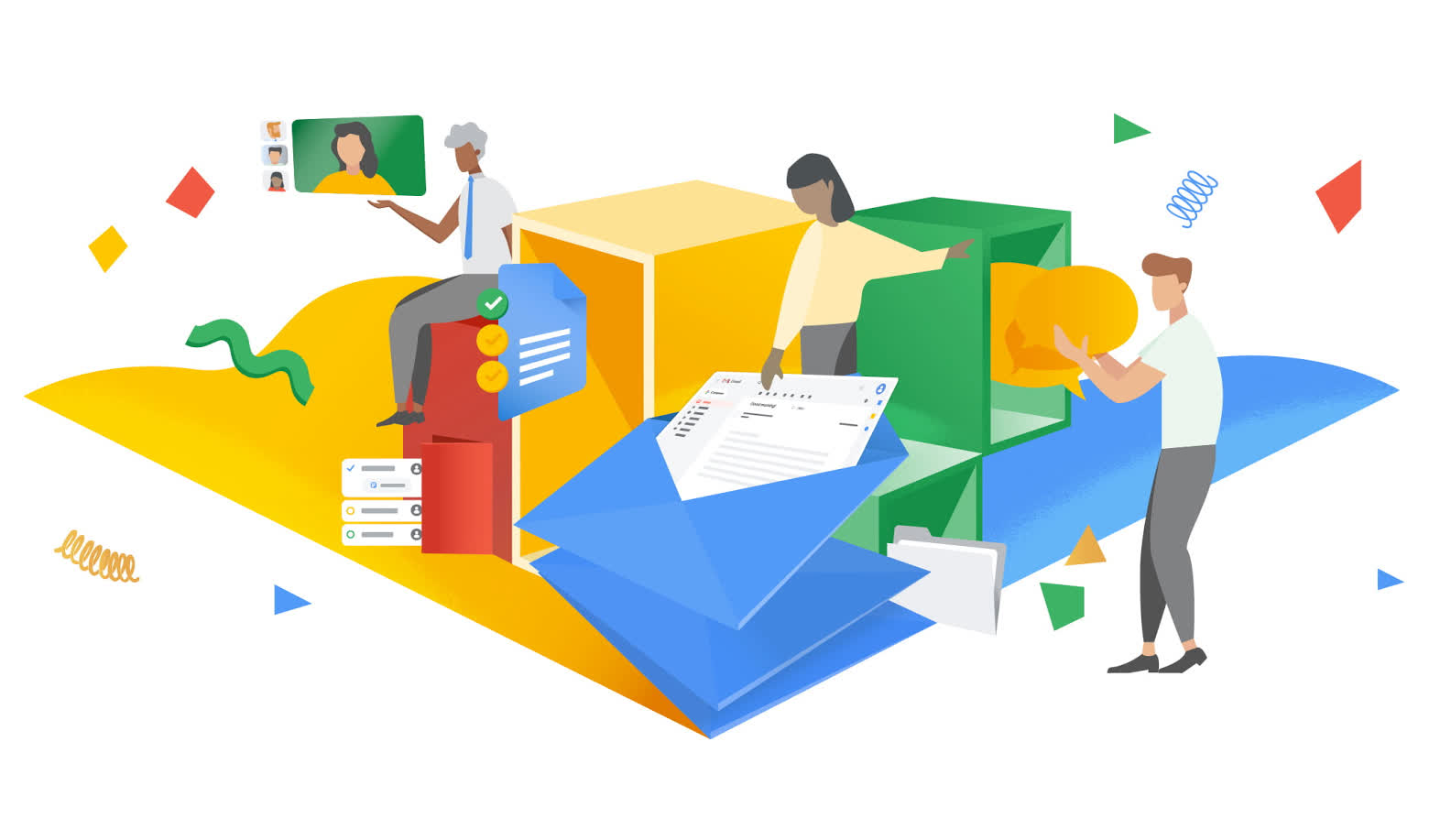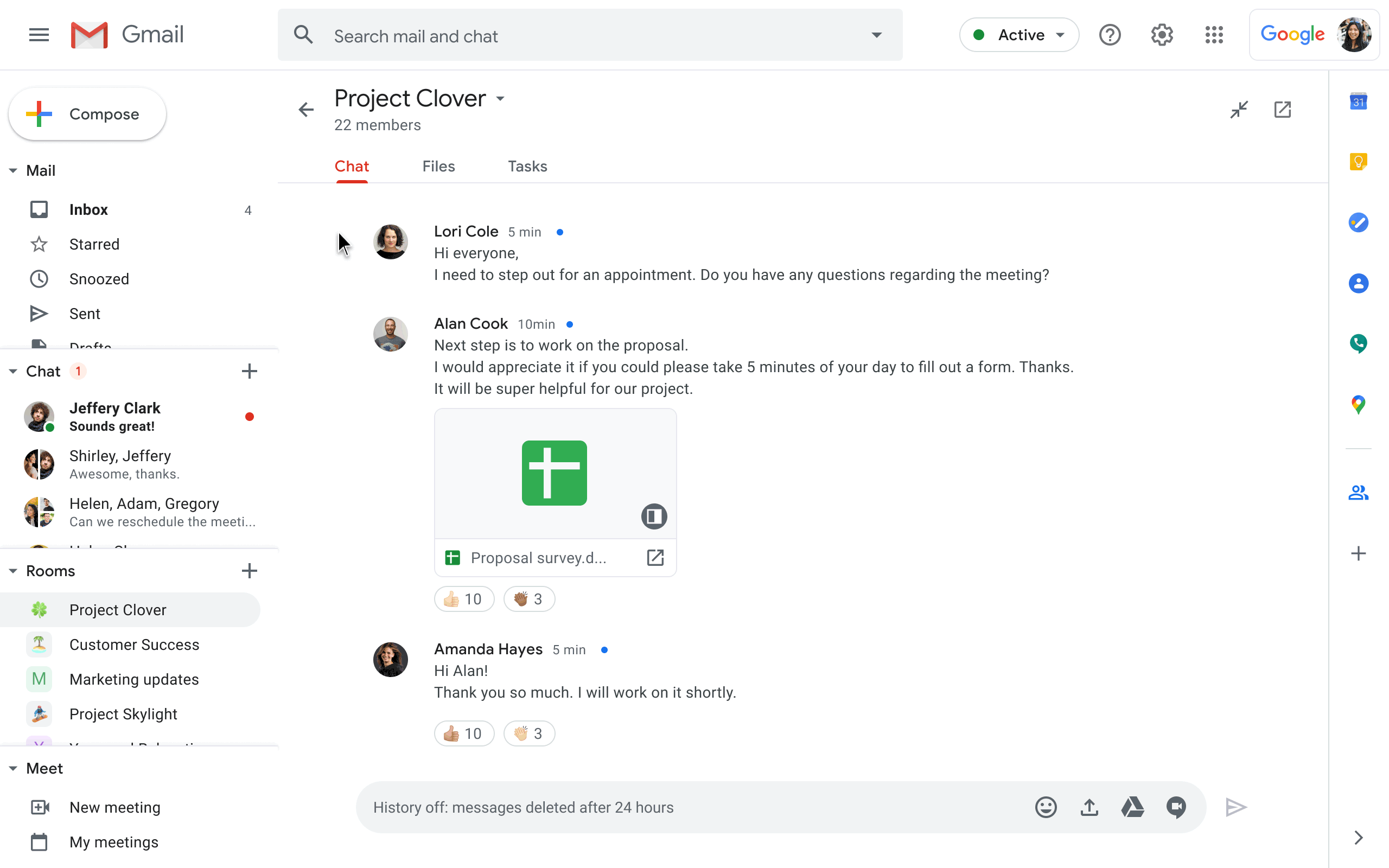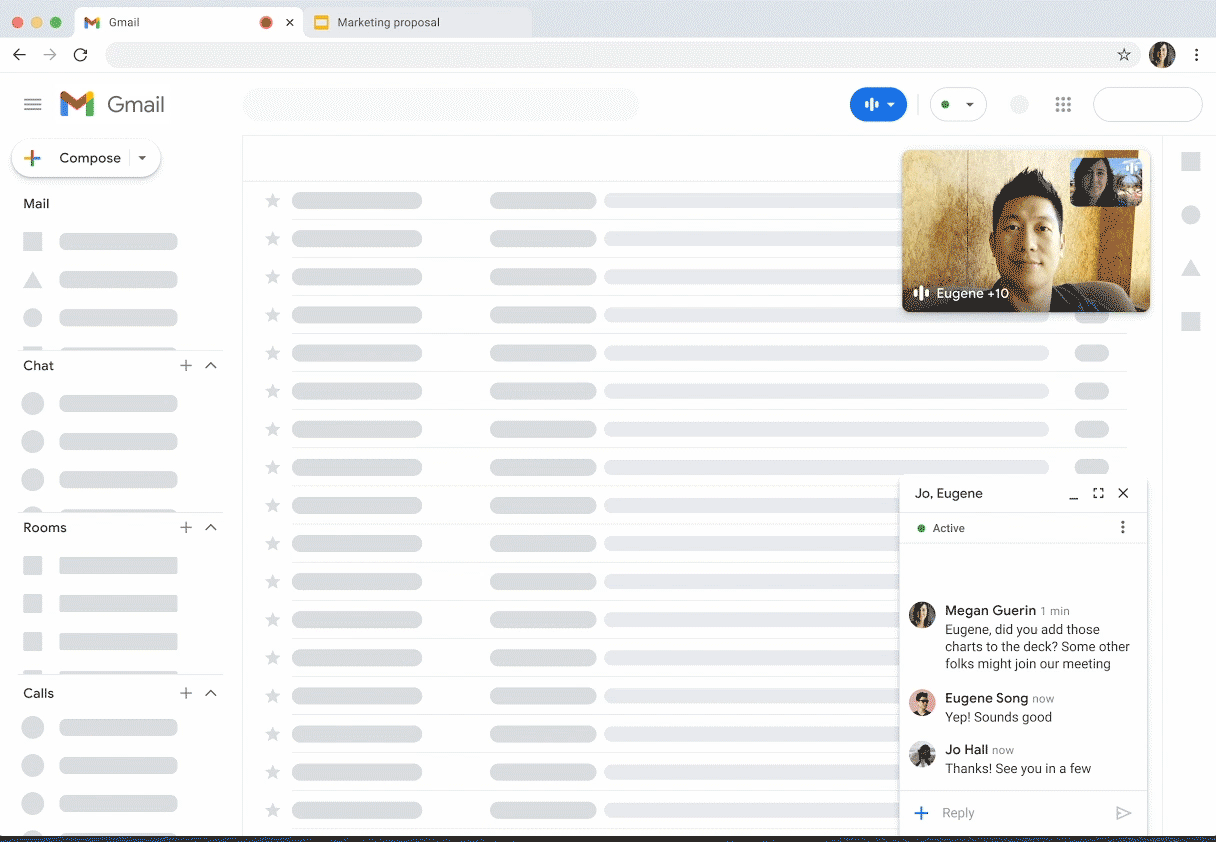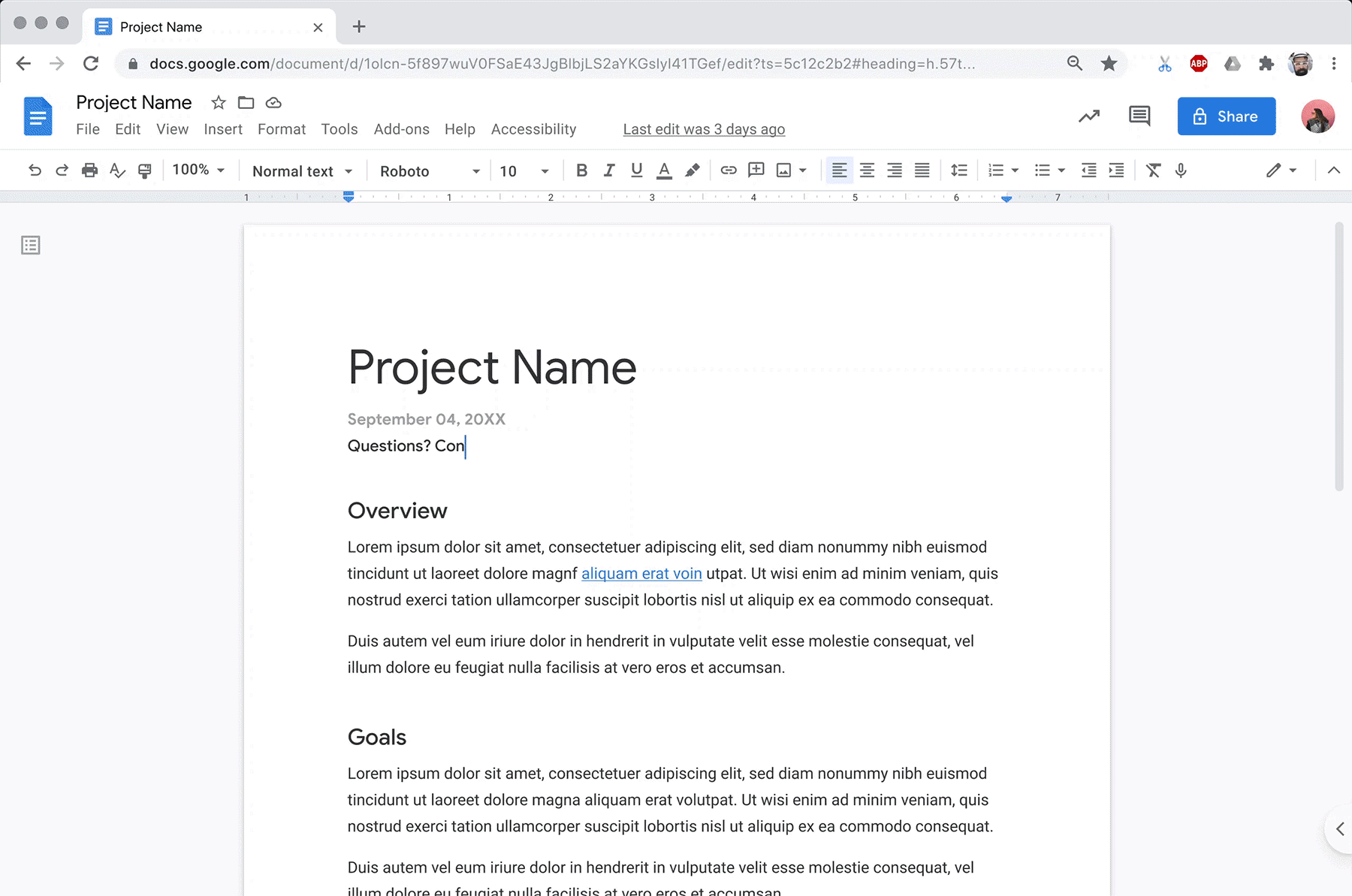In context: One of the many changes brought about by the pandemic has been a significant shift in how we think about work processes as well as communications and collaboration with co-workers, clients, and colleagues. While we’re doing many of the same things we’d done before—creating documents, having meetings, emailing, messaging, etc.—the manner with which we’re achieving these tasks has shifted.

In recognition of this change, Google today announced some significant new changes to its productivity suite—previously known as G Suite, but henceforth called Google Workspace.
In addition to obvious branding and graphical changes, Workspace takes the core applications of G Suite, including Gmail, Docs, Sheets, Slides, Drive, Calendar and Meet, and provides tighter integration between the pieces, particularly with regard to collaboration. Google is also providing a broader range of pricing options, for different sized companies and for different tiers of capability and support.
From a functionality perspective, one of the key differences in Workspace is an expanded role for Gmail.
From a functionality perspective, one of the key differences in Workspace is an expanded role for Gmail. From within Gmail, it’s now possible to do things like create and share documents, as well as join a meeting or directly start a call. Arguably, some of these tasks are only an extra step or two away in G Suite, but one of the key goals of Workspace is to make your work environment more seamless and more intelligent.

We’ve seen companies like Citrix and VMWare provide an integrated work environment for applications and documents with their respective workspace products (in their cases, integrating access to applications and services from many different vendors), so it’s not surprising to see Google move in this direction as well. Ultimately, what most of them want to achieve is an environment that’s essentially independent of any underlying OS and, eventually, even independent applications.
The goal is to build the true equivalent of a blank workspace through which you can get your work done—in whatever form it may take. One of the benefits of this approach is the ability to easily switch between large screen and mobile devices without losing functionality.

Of course, we haven’t reached this “OS-less” and “application-less” world just yet, so for now, the idea is to make independent applications and services feel a bit more like “plug-ins” or “extensions” to a core communication and collaboration platform.
In Workspace, for example, you can have linked content that you can see and edit without switching apps. You can also tag people (via an @ mention) and get suggested actions and/or methods for communicating with that person (or group). This is one of the places where the additional AI-based intelligence that Google has been building into its suite for the last few years comes into play. The idea is to have Workspace help make the process of making better content (such as with writing suggestions) easier to create and share.

Like most video conferencing platforms, Google has been on a tear adding new capabilities into Meet, the latest version of which is included with Workspace. Launching picture-in-picture-based video calls from within Gmail, for example, provides a fast, easy, and new way to communicate with colleagues and co-workers. In addition, Google has made some important new additions to better integrate its latest collaborative hardware offerings such as Chromecast, Nest Hub Max, and Series One meeting room kits. The idea here is to better leverage all the physical assets you have available to you in whatever location you happen to be in—from screens to speakers to interactive whiteboards—in a more intelligent, more seamless fashion.

Again, some of these capabilities have been available before, but they often required a fair amount of configuration to make them function properly. The goal with Workspace is to make them work like a single unified system. Given the likely reality that we’re all going to be working in hybrid work environments that will include some people at an office, some people working from home, and still others potentially travelling for some time to come, this capability becomes increasingly important.
Another important, though admittedly less exciting, part of Google’s efforts with Workspace is to make it easier for organizations to either switch over from or easily coexist alongside Microsoft’s Office 365 and M365 offerings. To that end, Google has been continuing to enhance the interoperability with Office documents and recently launched Migration services to ease the transition process. Speaking of services, Google also continues to enhance its professional services organization and expects it to play a bigger role as more organizations start to consider Workspace.
It’s for similar reasons that Google also announced the wider range of pricing/functionality tiers for different business sizes. Enterprise versions of Workspace range from $10/user per month to $30/user per month, with the more expensive options including additional security and management capabilities. For small business (under 300 users), prices range from $6/user per month to $18/user per month, with the higher price levels incorporating more advanced functions in Meet (such as user polls and automatic meeting transcriptions) as well as security and endpoint management functions.
Consumers will still continue to have access to the free versions of the core updated Google apps (after all, G Suite is currently used by 2.6 billion users on a monthly basis, but only about 6 million are currently paying for G Suite). However, users of the free versions won’t have access to the tech support, business-focused functions and certain advanced features that the paid customers of Workspace have access to. Over time, some of these advanced features will likely trickle down into the free versions of these applications as well.
While the pandemic may not have completely redefined what productivity and collaboration mean, it’s certainly impacted the means by which we perform these tasks. As we’ve learned, the flexibility to work anytime, anywhere on any device is what we all need. We’ve heard that idea being talked about by many other vendors in the past, but the truth is, before the pandemic, it seemed much more conceptual than real. Given our new and continuing reality, it’s good to see Google, and its new Workspace offering, take what looks to be some important steps in the direction of bringing this concept more fully to life.
Bob O’Donnell is the founder and chief analyst of TECHnalysis Research, LLC a technology consulting firm that provides strategic consulting and market research services to the technology industry and professional financial community. You can follow him on Twitter @bobodtech.
https://www.techspot.com/news/86999-google-workspace-new-g-suite-integrates-many-services.html